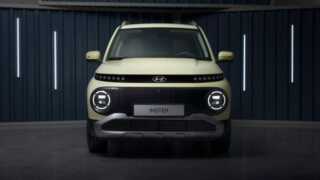Share via: This drive comes at a time when ASEAN is becoming the new frontline for world EV producers. Hyundai’s sales in the six largest ASEAN countries fell 8 per cent in the first half of 2025. Get Launch Updates on Notify me Hyundai Motor Co. is recalibrating its Southeast Asia strategy, caught in the crosswinds of China’s low-cost EV juggernaut and the long-standing dominance of Japanese automakers, a report by ANI stated. Once viewed as an uphill climb, ASEAN has turned into Hyundai’s most urgent battleground, one where the real threat is no longer Toyota or Honda, but BYD and VinFast. Hyundai is not standing still. In August 2024, it obtained approval from Thailand’s Board of Investment for a 1 billion Baht (approximately $31 million) investment to establish an EV and battery manufacturing plant. From 2025 onward, the automaker will also spend 680 billion won ($486 million) within five years in Malaysia, marking its determination to root itself in the region. Also Read : Hyundai Verna facelift spied testing in India ahead of 2026 market launch This drive comes at a time when ASEAN is becoming the new frontline for world EV producers. With a tariff-free landscape and relatively weak local brands, it has become a race to grab market share, a race that Chinese carmakers are sprinting ahead in. Hyundai loses ground, China gains speedThe numbers tell the story. Hyundai’s sales in the six largest ASEAN countries fell 8 per cent in the first half of 2025. In Indonesia, its crown jewel where the company set up its first ASEAN plant in 2022, volumes slipped from 12,044 in early 2024 to 11,188 this year. By contrast, BYD exploded from 1,596 units to 14,092 in the same period. Vietnamese newcomer VinFast isn’t far behind either, doubling its sales and breaking into the ASEAN top 10. The disruption is palpable: while Toyota’s regional sales dipped marginally by 1 per cent, Chinese players are rewriting the growth script with triple-digit surges. Also Read : Hyundai Motor India sells 11,000 cars in a single day. Check details The localisation arms raceHyundai’s heavy bets in Indonesia include not just car production but also the HLI Green Power battery plant, a joint venture with LG Energy Solution completed in 2024. But the challenge is accelerating. BYD plans a production capacity of 300,000 units in Indonesia and Thailand by 2030. Chery and Wuling are scaling up sharply in Malaysia and Indonesia, while VinFast is building plants capable of 200,000 units annually across Vietnam and Indonesia. For Hyundai, localisation is no longer just a strategy; it is survival. The company is weighing LFP-based EV models, cheaper and more suited to ASEAN demand, while working to expand dealer networks and diversify price points. Race against time“The ASEAN market is a race for speed and localisation,” an official from the Korea Automobile & Mobility Association observed. The sentiment underlines Hyundai’s dilemma: invest faster, go cheaper, and stay relevant, or risk being outpaced. Hyundai, for its part, insists it is watching closely. “We will step up efforts to capture the ASEAN market with a wider range of models at different price points and differentiated competitiveness,” a company spokesperson said. The battle lines in ASEAN are clear. Hyundai may have the factories and partnerships in place, but in a market where speed trumps heritage, the real question is whether it can catch up with the Chinese tide. Get insights into Upcoming Cars In India, Electric Vehicles, Upcoming Bikes in India and cutting-edge technology transforming the automotive landscape. First Published Date: 01 Oct 2025, 08:00 am IST
Source: hindustantimes.com






